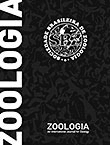
Zoologia
Scope & Guideline
Pioneering Insights into Animal Biology
Introduction
Aims and Scopes
- Biodiversity and Taxonomy:
The journal extensively covers the diversity and taxonomy of animal species, especially focusing on Brazilian fauna. It includes taxonomic reviews, new species descriptions, and comprehensive catalogs that contribute to the understanding of species richness and distribution. - Ecological Studies:
Zoologia publishes research that investigates ecological relationships and behaviors of various animal taxa, including habitat use, foraging strategies, and reproductive behaviors, providing insights into ecosystem functioning and species interactions. - Conservation and Environmental Impact:
The journal emphasizes studies that assess the impact of human activities on animal populations and their habitats, highlighting the importance of conservation efforts in maintaining biodiversity. - Phylogenetics and Evolutionary Biology:
Research articles often explore phylogenetic relationships and evolutionary patterns among species, contributing to the understanding of evolutionary processes and the historical context of biodiversity. - Molecular and Genetic Studies:
Zoologia encourages the use of molecular techniques to study genetic diversity, population structure, and phylogeography, enhancing the understanding of species' evolutionary history and adaptation.
Trending and Emerging
- Taxonomic Cataloging and Species Descriptions:
There is a strong trend towards comprehensive taxonomic cataloging, with numerous articles dedicated to documenting and describing new species, particularly within Brazilian fauna, highlighting the urgency of cataloging biodiversity. - Urban Ecology and Anthropogenic Impacts:
Recent publications increasingly address the effects of urbanization on wildlife, reflecting a growing interest in understanding how urban environments impact animal behavior, distribution, and conservation. - Conservation Genetics:
Emerging themes include studies on conservation genetics, where molecular techniques are applied to assess genetic diversity and inform conservation strategies, indicating a shift towards integrating genetics in conservation efforts. - Phylogeography and Distribution Modeling:
There is a noticeable increase in research focused on phylogeography and predictive modeling of species distributions, which is essential for understanding biodiversity patterns and informing conservation policies. - Parasite and Host Interactions:
Research examining the interactions between parasites and their hosts is gaining traction, reflecting a broader interest in understanding ecological relationships and the implications for biodiversity and public health.
Declining or Waning
- Behavioral Ecology of Non-Brazilian Species:
There has been a noticeable decrease in studies focusing on the behavioral ecology of animal species outside of Brazil, suggesting a shift towards more localized research that emphasizes Brazilian fauna. - Marine Biodiversity Studies:
Marine-related research, particularly studies focusing on the biodiversity of marine species, seems to be less frequent in recent publications, which may indicate a growing focus on terrestrial ecosystems. - Historical Taxonomy:
The frequency of articles discussing historical taxonomic classifications or reviews of older taxonomic literature has diminished, possibly as the field moves towards more innovative and molecular approaches. - Generalized Ecological Studies:
Research that broadly covers ecological principles without a specific focus on Brazilian species or ecosystems appears to be waning, as the journal increasingly prioritizes localized and specific ecological studies.
Similar Journals
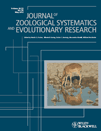
JOURNAL OF ZOOLOGICAL SYSTEMATICS AND EVOLUTIONARY RESEARCH
Transforming Insights into Evolutionary UnderstandingThe Journal of Zoological Systematics and Evolutionary Research, published by Wiley-Hindawi, stands as a premier academic journal since its establishment, showcasing cutting-edge research in the fields of Animal Science, Zoology, and Ecology. With an impressive track record spanning from 1963 to the present, this journal has earned a Q1 classification in both Animal Science and Ecology, as well as recognized rankings in Genetics and Molecular Biology. Its impact is highlighted by its Scopus ranks, placing it in the top percentile for relevant categories, underscoring its vital role in advancing knowledge and understanding within these disciplines. Researchers, professionals, and students will find a wealth of high-quality, peer-reviewed articles that contribute to the evolutionary understanding of biodiversity and systematics. Though not an Open Access journal, it remains accessible to a wide audience committed to exploring the intricacies of zoology and evolutionary biology.
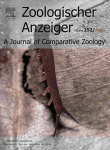
ZOOLOGISCHER ANZEIGER
Shaping the Future of Zoological StudiesZoologischer Anzeiger is a prestigious peer-reviewed journal published by Elsevier GmbH in Germany, dedicated to advancing the fields of Animal Science and Zoology. With its consistent ranking in the Q1 category for both disciplines and a commendable Scopus rank of #165 out of 490, it stands out as a leading platform for innovative research and critical reviews in zoological sciences. The journal has been in continuous publication since 1961, navigating through different converged years, and remains a vital resource for researchers, professionals, and students aiming to deepen their knowledge and contribute to the dynamic field of zoology. Although it does not offer open access, the journal ensures that its content adheres to the highest standards of academic integrity and rigor, making it an essential read for anyone serious about animal biology and ecological studies. For research excellence and impactful scholarly discussions, Zoologischer Anzeiger is indispensable.
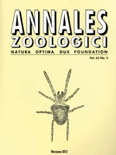
ANNALES ZOOLOGICI
Connecting Research and Conservation EffortsANNALES ZOOLOGICI is a distinguished academic journal published by the Museum & Institute of Zoology, Polish Academy of Sciences, based in Warsaw, Poland. With a long-standing tradition in zoological research, this journal has evolved to encompass a diverse range of studies in ecology, evolution, behavior, and systematics, aiming to foster a deeper understanding of animal biology and conservation. It holds a commendable Q2 classification in the 2023 Ecology, Evolution, Behavior and Systematics category, indicating its significant contribution to the field. Although ANNALES ZOOLOGICI is not an open-access publication, it remains accessible to a global audience of researchers, professionals, and students aiming to advance their knowledge and engage with cutting-edge zoological findings. As of 2024, this journal continues to be a vital resource for those eager to explore the complexities of animal life and contribute to ongoing discussions within this essential scientific discipline.

REVUE SUISSE DE ZOOLOGIE
Illuminating the Path of Zoological DiscoveryThe REVUE SUISSE DE ZOOLOGIE, published by the esteemed MUSEUM HISTOIRE NATURELLE, is a premier journal dedicated to advancing the field of zoology and its related disciplines. Established in 1964, this Swiss journal has consistently provided a platform for high-quality research in the areas of ecology, evolution, behavior, and systematics, currently holding a commendable Q3 ranking in these categories for 2023. With a rich publication history spanning from 1964 to 1979 and then from 1994 to the present, it serves not only as a significant repository of knowledge but also as a crucial resource for researchers, professionals, and students alike. While the journal is not open access, it remains a vital tool for those wishing to stay at the forefront of zoological research and innovation. Its commitment to disseminating groundbreaking studies makes it an indispensable asset for academic institutions and researchers globally, ensuring that pivotal findings in zoology continue to gain visibility and impact.
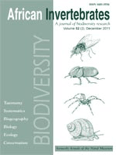
AFRICAN INVERTEBRATES
Bridging Disciplines in African Invertebrate StudiesAFRICAN INVERTEBRATES is a distinguished open-access academic journal published by the COUNCIL NATAL MUSEUM, specializing in the study of invertebrate biology within the vibrant ecosystems of Africa. Operating since 2006, this journal has established itself as a vital resource in the fields of Animal Science, Ecology, Evolution, Behavior, Insect Science, and Paleontology, earning a strong Q2 ranking in these categories as of 2023. With its ISSN 1681-5556 and E-ISSN 2305-2562, the journal provides unrestricted access to cutting-edge research, fostering collaboration among global researchers and professionals. AFRICAN INVERTEBRATES serves not only as a platform for high-quality scholarly articles but also aims to enhance the understanding of Africa's unique invertebrate fauna and the ecological challenges they face. With a commitment to innovation and excellence, the journal is pivotal for those looking to contribute to the discourse surrounding African biodiversity and conservation strategies.
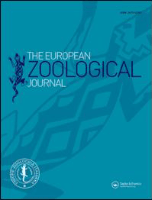
European Zoological Journal
Unveiling Insights into Animal Biology and ConservationEuropean Zoological Journal, published by Taylor & Francis Ltd, is an esteemed open-access publication dedicated to advancing the exciting field of zoology. Since its inception in 2017, this journal has progressively established itself as a vital resource for researchers, professionals, and students alike. With its Q2 ranking in Animal Science and Zoology as of 2023, the journal ranks in the 69th percentile among its peers, showcasing its influence and contribution to the discipline. The journal’s broad scope covers a wide range of topics within zoology, aiming to foster an understanding of animal biology and conservation efforts. As an open-access journal, it not only enhances the dissemination of knowledge but also encourages collaborative research across global communities. Situated in the United Kingdom, the European Zoological Journal invites submissions that contribute to the evolving discourse in animal sciences, and endeavors to support the scientific community in addressing pressing ecological challenges.
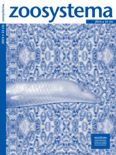
ZOOSYSTEMA
Connecting Research with Conservation EffortsZOOSYSTEMA is a prestigious academic journal published by PUBLICATIONS SCIENTIFIQUES DU MUSEUM, PARIS, specializing in the fields of Animal Science, Zoology, and Ecology. With a focus on advancing the understanding of biodiversity and evolutionary processes, this journal serves as a vital platform for researchers to disseminate significant findings and foster discussions within the scientific community. Boasting an impressive categorization in the Q2 Quartile rankings for both its primary fields, ZOOSYSTEMA is recognized for its impact and quality, as indicated by its notable positions in the Scopus rankings. While currently not Open Access, the journal provides essential insights and comprehensive reviews across its volumes published since 1998, making it a cornerstone in zoological and ecological research. Researchers, professionals, and students alike will find ZOOSYSTEMA an invaluable resource for understanding complex biological systems and their interrelations, contributing to informed conservation and management efforts globally.

SPIXIANA
Fostering Knowledge in Animal SciencesSPIXIANA is a distinguished journal dedicated to the fields of animal science and zoology, published by VERLAG DR FRIEDRICH PFEIL in Germany. With the ISSN 0341-8391, it has been contributing to the scientific community since its inception, with volumes converging from 2008 to 2024. Although currently listed in the Q4 quartile of the 2023 category rankings for Animal Science and Zoology, it provides a vital platform for researchers and professionals to disseminate significant findings in the field. Despite being unindexed in open access, SPIXIANA ensures that vital research reaches its audience, enhancing academic discourse and furthering our understanding of zoological sciences. Its commitment to sharing rigorous scientific research make it an important resource for anyone passionate about animal biology and conservation.
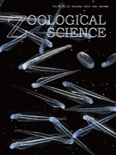
ZOOLOGICAL SCIENCE
Advancing the Frontiers of Animal ScienceZoological Science, published by the Zoological Society of Japan, is a leading journal dedicated to the fields of animal science and zoology. With its ISSN 0289-0003, this respected publication has established itself as a prominent source of scientific research, attaining a commendable Q2 ranking in the 2023 category of Animal Science and Zoology. Spanning over three decades, from 1992 to 2024, the journal offers a valuable platform for scholarly articles that explore various aspects of zoology, including ecology, behavior, and evolutionary biology. Although it operates under a traditional subscription model, its contributions are supported by a robust community of researchers and professionals who value its insights. The journal strives to foster academic discourse and insights that drive understanding and conservation of wildlife, making it an essential resource for students and established experts alike. The publishing headquarters located in Tokyo, Japan, further enhances its international reach and influence in zoological studies.

ACTA ZOOLOGICA BULGARICA
Fostering Knowledge in the Heart of Animal SciencesACTA ZOOLOGICA BULGARICA is a prominent academic journal dedicated to advancing knowledge in the fields of Animal Science, Zoology, Aquatic Science, Ecology, Evolution, Behavior, and Systematics. Published by the Institute of Zoology, Bulgarian Academy of Sciences, this journal serves as an invaluable platform for researchers, professionals, and students to disseminate their findings and engage with contemporary issues in biodiversity and ecology. With an established history since its convergence in 2010 and an ongoing publication schedule through to 2024, the journal holds a Q4 category ranking in multiple disciplines, highlighting its role in fostering scholarly communication in these areas despite its recent entry into Scopus-indexed rankings. Although currently not an open-access journal, ACTA ZOOLOGICA BULGARICA remains a key resource for those interested in the latest research and developments, particularly within the ecological and zoological landscapes of Europe and beyond.